Top speed 154 km/h Length 7.3 m | Wingspan 9.549 m First flight 1915 | |
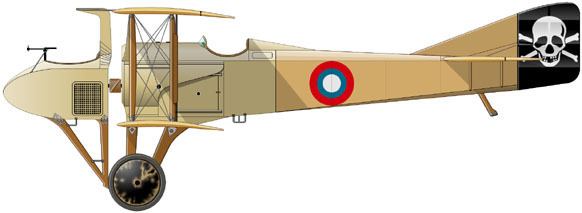 | ||
Manufacturer Société pour l'aviation et ses dérivés | ||
Spad s a 2
The SPAD S.A (also called S.A.L.) was a French two-seat tractor biplane first flown in 1915. It was used by France and Russia in the early stages of the First World War in the fighter and reconnaissance roles. It was a somewhat unusual aircraft that carried its observer in a nacelle ahead of both wing and engine.
Contents
- Spad s a 2
- Spad s a 2 french plane
- Design and development
- Operational history
- Variants
- Operators
- Specifications SA 2
- References

Spad s a 2 french plane
Design and development

The SPAD A.1 prototype was the first aircraft produced by SPAD following its reorganization from the pre-war Deperdussin company. The chief designer, Louis Béchereau, had been involved in designing that firm's successful monocoque racing monoplanes, and many design details were carried over from the Deperdussins.

The aircraft was designed to carry not only its pilot in the normal position, but also an observer in a streamlined nacelle ahead of the propeller. This configuration was an attempt to combine the advantages of the tractor and the pusher types, giving the observer a clear field of view to the front and sides without the drag penalty of the typical pusher. However, communication between the pilot and the observer was nearly impossible. The pulpit (as it was known in English) or basket (as it was referred to in Russian) vibrated badly and, in multiple cases, parted company from the rest of the aircraft while in flight. Like many pushers, it also put the observer at risk of being crushed in even a relatively mild crash or "nose-over". A British evaluation of the type suggested "it would be expensive in observers if flown by indifferent pilots".
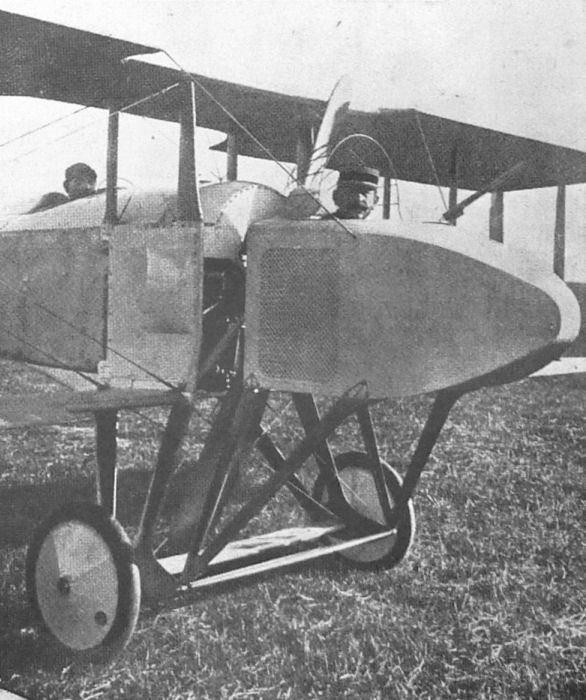
While not originally designed explicitly as a gunner's position, early combat experience had shown a need for forward-firing machine guns. But mechanisms to allow a gun to fire through the propeller were not yet available, and the observer's nacelle on the S.A-1 represented a temporary solution.
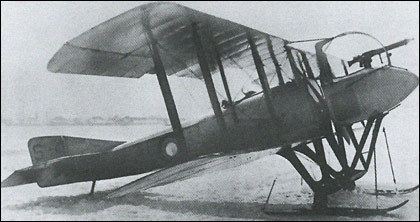
On all but the earliest prototypes and the SPAD S.G, the nacelle was fitted with a light machine gun on a flexible tubular mount, and it incorporated air intakes on its sides and underside to redirect air toward the Le Rhône rotary engine, which was otherwise masked by the nacelle. Starting the engine required the prop to be swung from alongside the fuselage. The nacelle was hinged at the bottom to provide some access to the engine for maintenance, but this was insufficient, and additional sliding panels were added to the sides of the fuselage. A mesh screen behind the observer was intended to prevent propeller strikes. The first prototypes were unarmed, although one was fitted with dummy guns to represent the S.G., which differed by having one or more machine guns mounted in the nacelle, without any occupant. The S.G.'s guns were not accessible, which caused problems, and its performance was quickly eclipsed by other single-seat fighters, including the Nieuport 10 and Nieuport 11, so it received no orders.
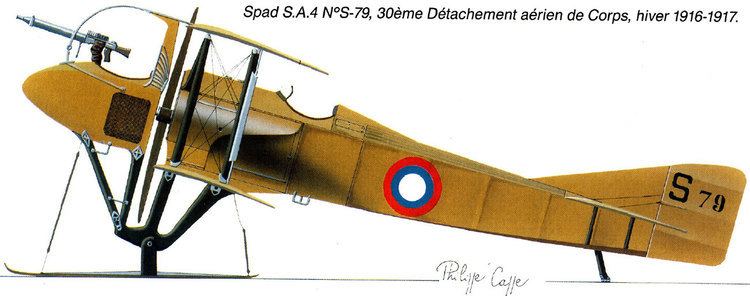
Aside from the unorthodox configuration, the aircraft was of standard wood and fabric construction for the period. The wings had a single bay, but to prevent the long flying and landing wires from vibrating in flight, light vertical struts were added mid-bay to brace the wires, giving the aircraft the appearance of a two-bay biplane.
The SPAD S.A.2 was an improved version of the S.A.1 which first flew on 21 May 1915.
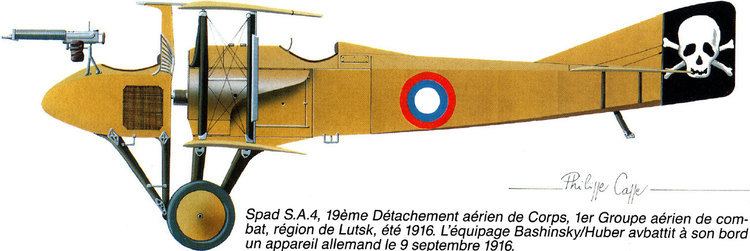
The S.A-2's 110 hp engine frequently suffered from overheating, so the design reverted to the S.A-1s 80 hp Le Rhone in the S.A-4, with the same engine being retrofitted to some S.A-2s. Other changes included dispensing with the lower ailerons on the narrower chord lower wings and a larger tailplane to eliminate the need for a bungee to help with trimming. Russian models had minor structural differences to the top wing, incorporating a separate center section rather than each wing panel being joined along the centerline.
In spite of its lack of success, the design brought valuable experience to Béchereau and his team. The successful S.VII fighter was a direct development of the A series. It had much in common. However, the differences included the pulpit being dispensed with, being re-engined with a Hispano-Suiza V8, having a delta-shaped tailplane, the fuselage being fitted with additional fairing stringers, wire trailing edges, reduced rib spacing, and proportions adjusted slightly. Most other design details were retained.
Operational history
The S.A had a short and inauspicious career in the French Aviation Militaire, and it was quickly replaced in service by less dangerous planes. Contemporary sources indicate that it was seldom used. Few details are available concerning the careers of the 42 S.A-2 airframes delivered, and it never supplied the entire equipment of an escadrille.
The Imperial Russian Air Service operated the SPAD S.A-2 and S.A-4 for a longer period of time due to a shortage of available aircraft. Some 57 S.A-2s and S.A-4s went to the Imperial Russian Air Service. During winter operations, Russian aircraft were fitted with skis instead of wheels. Although Russian crews also thought very little of the SPAD (not made any better by the acronym SPAD (СПАД) in Russian meaning "slump" or "plummet"), at least two crews achieved successes with it.
On November 25, 1916, Russian pilot Karpov and his gunner, Bratolyubov Jurij Aleksandrovich, claimed a German aircraft near the village of Vulka.
At least one example survived to be used briefly by the Soviet Union before they retired all obsolete types.
Variants
Operators
Specifications (S.A-2)
Data from "SPAD S-A2". aviafrance.com. Retrieved November 2015.
General characteristics
Performance
Armament
